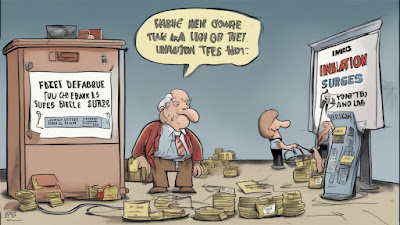September 9, 2023
In a concerning economic development, inflation in the United States soared to 9.1% in the month of June, marking its highest level since 1981. The sharp increase in consumer prices was primarily driven by surging costs for essential items such as food, energy, and shelter, leaving households grappling with the strain of rising living expenses.
The inflationary pressures have been a growing concern for policymakers, economists, and everyday Americans alike. The 9.1% rate represents a significant acceleration in price growth, fueled in part by supply chain disruptions, increased demand for goods and services, and other factors contributing to the broader global inflationary trend.
Rising food prices, particularly for staple items, have squeezed household budgets, making it more challenging for families to make ends meet. Similarly, elevated energy costs have led to higher gasoline and utility bills, further impacting the financial well-being of citizens.
One of the key responses to this mounting inflation has been the anticipation of Federal Reserve action. It is widely expected that the Federal Reserve will take decisive steps to curb inflation by raising interest rates. Reports suggest that a rate hike of 75 basis points is in the offing later this month as part of the central bank's efforts to cool the economy and bring inflation under control.
The impending rate increase has sparked debates about its potential effects on economic growth and employment. While it is aimed at reducing inflationary pressures, there are concerns that higher interest rates could also slow down economic activity and impact job creation.
The months ahead will be closely watched by experts and the public as the Federal Reserve navigates the delicate task of balancing inflation containment with economic stability. The outcome of these efforts will shape the economic landscape and have far-reaching implications for households, businesses, and the broader financial markets.


Post a Comment